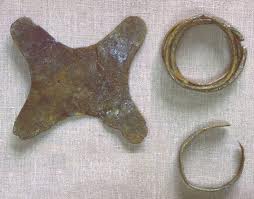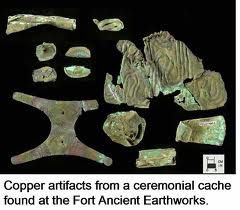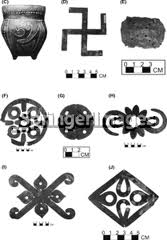It looks like you're using an Ad Blocker.
Please white-list or disable AboveTopSecret.com in your ad-blocking tool.
Thank you.
Some features of ATS will be disabled while you continue to use an ad-blocker.
share:
I'll add that my post above isn't a joke. Well the Mt Dew thing is.
That part was added because it sounded like a cool way to end a small post and rhymed.
I honestly see a flowing equation going on here and can just play with it days on end.
So that's why I say High Yah when I Chop ?
Judan
Dan Rank
Judo
柔道 = Judo
Let's find out what other connotations are here.
柔 = Soft , Gentle, Flexible, Supple, Sophie, Mild, Yielding
道 = Road, Path, Way, Channel, Taoism, Doctrine, Circuit, Method, Principle, Principium; (v) Say, Talk, Suppose, Think, Speak
Gentle like a Gentile? Sophie is Wisdom?
Taoism? The "T" ?
Step or Stage? Hmm...
"All the World's a 'Dan' " ?
Please note I am investigating "Ju" words here. And it leads to "Dan" in Japan?
I find this type of synchronicity utterly compelling.
That part was added because it sounded like a cool way to end a small post and rhymed.
I honestly see a flowing equation going on here and can just play with it days on end.
So that's why I say High Yah when I Chop ?
Judan
The 10th degree black belt in Dan rank in Japan
Dan Rank
The dan (段?) ranking system is used by many Japanese organizations to indicate the level of one's ability (expertise) within a certain subject matter. As a ranking system, it was originally used at a go school during the Edo period.[1] It is now also used in modern fine arts, martial arts.
Judo
柔道 = Judo
meaning "gentle way"
Let's find out what other connotations are here.
柔 = Soft , Gentle, Flexible, Supple, Sophie, Mild, Yielding
道 = Road, Path, Way, Channel, Taoism, Doctrine, Circuit, Method, Principle, Principium; (v) Say, Talk, Suppose, Think, Speak
Gentle like a Gentile? Sophie is Wisdom?
Taoism? The "T" ?
The Chinese character for the word dan (段) literally means step or stage in Japanese, but is also used to refer to one's rank or grade, i.e., one's degree or level of expertise.
Step or Stage? Hmm...
"All the World's a 'Dan' " ?
Please note I am investigating "Ju" words here. And it leads to "Dan" in Japan?
I find this type of synchronicity utterly compelling.
edit on 12-3-2014 by muzzleflash because: (no reason given)
The point is to show that the word game is much deeper and almost seems to indicate a fanning out pattern of migration.
Perhaps our maps and 'nation labeling' attitude we are indoctrinated with betrays the reality of travel, interbreeding, etc, far more than an accurate portrayal of history would allow?
Just a suggestion and a question.
I am only wondering because I simply don't know for sure on that specific yet.
The vast info available begs many questions.
I only tossed out a random snippet that in English should throw anyone a nice curve.
There's tons more just type stuff in the Wiki search for whatever you can think of.
Perhaps our maps and 'nation labeling' attitude we are indoctrinated with betrays the reality of travel, interbreeding, etc, far more than an accurate portrayal of history would allow?
Just a suggestion and a question.
I am only wondering because I simply don't know for sure on that specific yet.
The vast info available begs many questions.
I only tossed out a random snippet that in English should throw anyone a nice curve.
There's tons more just type stuff in the Wiki search for whatever you can think of.
reply to post by muzzleflash
Jutes......heres something that caught my eye on that awhile back.
Julii
What caught my eye was the Julii and the fact they were...... from Alba Italy. Scottland is also called Alba.
Alba
Who knows why the Julii Caesar of Alba Longa actually wanted to attack Alba. LOL!
Jutes......heres something that caught my eye on that awhile back.
The Julii were without doubt of Alban origin, and it is mentioned as one of the leading Alban houses, which Tullus Hostilius removed to Rome upon the destruction of Alba Longa. The Julii also existed at an early period at Bovillae, as we learn from a very ancient inscription on an altar in the theatre of that town, which speaks of their offering sacrifices according to the lege Albana, or Alban rites; and their connection with Bovillae is also implied by the sacrarium, or chapel, which the emperor Tiberius dedicated to the gens Julia in the town, and in which he placed the statue of Augustus. It is not impossible that some of the Julii may have settled at Bovillae after the fall of Alba Longa.
Julii
What caught my eye was the Julii and the fact they were...... from Alba Italy. Scottland is also called Alba.
Alba is the Scottish Gaelic name (pronounced [ˈal̪ˠapə]) for Scotland. It is cognate to Alba (gen. Alban, dat. Albain) in Irish and Nalbin in Manx, the two other Goidelic Insular Celtic languages, as well as similar words in the Brythonic Insular Celtic languages of Cornish (Alban) and Welsh (Yr Alban) also meaning Scotland.
Alba
Who knows why the Julii Caesar of Alba Longa actually wanted to attack Alba. LOL!
edit on 12-3-2014 by Logarock because: n
reply to post by muzzleflash
And all the world's a Dan? That is one very strange synchronicity -but as you point out above, it seems possible. I think you're right about 'nation labelling' and I also think it hinders us, particularly here.
In fact I think that is an extremely pertinent question here - in the absence of written history from the Picts, I've come to realise how narrow minded I've been, thinking about them.
The point is to show that the word game is much deeper and almost seems to indicate a fanning out pattern of migration.
Perhaps our maps and 'nation labeling' attitude we are indoctrinated with betrays the reality of travel, interbreeding, etc, far more than an accurate portrayal of history would allow?
And all the world's a Dan? That is one very strange synchronicity -but as you point out above, it seems possible. I think you're right about 'nation labelling' and I also think it hinders us, particularly here.
In fact I think that is an extremely pertinent question here - in the absence of written history from the Picts, I've come to realise how narrow minded I've been, thinking about them.
reply to post by Logarock
It's almost too bizarre! In fact, lol is the best response I can give to that too!
While I remember, do you know what this cross represents, or rather who it is associated with?
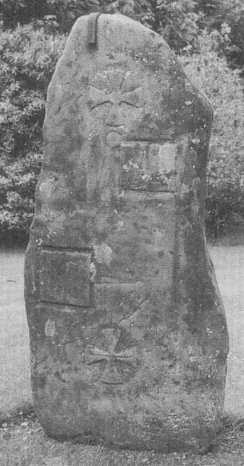
Who knows why the Julii Caesar of Alba Longa actually wanted to attack Alba. LOL!
It's almost too bizarre! In fact, lol is the best response I can give to that too!
While I remember, do you know what this cross represents, or rather who it is associated with?

reply to post by beansidhe
Not really but its all over the place even in North America quite frequently. I know the Pope wears one of those on some of his formal wear. DamBones may know.
Here it is in one example on a nice SW US rock art.
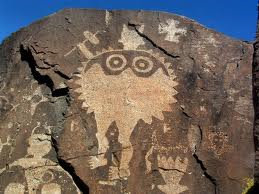
Not really but its all over the place even in North America quite frequently. I know the Pope wears one of those on some of his formal wear. DamBones may know.
Here it is in one example on a nice SW US rock art.

reply to post by Logarock
Wow, so it is. I'm just going to do a wee bit of digging, and come back to this asap
Wow, so it is. I'm just going to do a wee bit of digging, and come back to this asap
It's the Celtic Iron Cross, I'm pretty sure.
Will continue digging for info on it.
Will continue digging for info on it.
reply to post by Logarock
Did you notice the miraculous coincidence that occurred ?
No? I'll show you than...
On this specific post in the Sha thread
I wrote about ... Dan Ranking... and the "Invisible Woman", aka ? Jess Alba!
This inspired me to explore a few aspects so I'll write about that later on when it fits.
Also another strange twist, further down in that same post, I wrote about Jeet Kune Do which I coincidentally also mentioned yesterday in the other thread I posted in. So most everything I brought up yesterday was actually contained in a post from Jan 29.
Including YOUR Alba reference, but you will only "Get" that when you finally "See" that stormy "Invisible Woman".
Did you notice the miraculous coincidence that occurred ?
No? I'll show you than...
On this specific post in the Sha thread
I wrote about ... Dan Ranking... and the "Invisible Woman", aka ? Jess Alba!
This inspired me to explore a few aspects so I'll write about that later on when it fits.
Also another strange twist, further down in that same post, I wrote about Jeet Kune Do which I coincidentally also mentioned yesterday in the other thread I posted in. So most everything I brought up yesterday was actually contained in a post from Jan 29.
Including YOUR Alba reference, but you will only "Get" that when you finally "See" that stormy "Invisible Woman".
Logarock
I really think that's a funny depiction.
It's like the "Sun Devil" is showing us how to "Cook the Horned One" for dinner.
Hehe. That's so cool.
Let's call it an 'Oven Omen' that it's time to eat?
More Cow Ba'al ?
muzzleflash
Logarock
I really think that's a funny depiction.
It's like the "Sun Devil" is showing us how to "Cook the Horned One" for dinner.
Hehe. That's so cool.
Let's call it an 'Oven Omen' that it's time to eat?
More Cow Ba'al ?
Yes that was a good start...
Prometheus
Forethought, Foresight? 4 Side Psy I Scry with thine 2 Eyes.
and gives fire to humanity, an act that enabled progress and civilization. Prometheus is known for his intelligence and as a champion of mankind.[2]
So how does this relate to the overall scheme of questioning?
Well the whole wiki is compelling but this section I found very relevant in a general context of this photo above:
Pindar and the Nemean Odes[edit]
The duality of the gods and of humans standing as polar opposites is also clearly identified in the earliest traditions of Greek mythology and its legends by Pindar. In the sixth Nemean Ode, Pindar states: "There is one/race of men, one race of gods; both have breath/of life from a single mother. But sundered aurora collett us divided, so that one side is nothing, while on the other the brazen sky is established/a sure citadel forever."[19] Although this duality in strikingly apparent in Pindar, it also has paradoxical elements where Pindar actually comes quite close to Hesiod who before him had said in his Works and Days (108) "how the gods and mortal men sprang from one source."[20] The understanding of Prometheus and his role in the creation of humans and the theft of fire for their benefit is therefore distinctly adapted within this distinguishable source for understanding the role of Prometheus within the mythology of the interaction of the Gods with humans.
There's the word brazen again, brass.
Hmmm how compelling, the secrets of metallurgy perhaps?
Could the "food on a stick" above also simultaneously represent the "Holy Implement" in other forms such as early hammers etc ?
Flint, flames, eyes-sight, 4 direction stars, etc etc.
It's quite a nice mix and has me thinking of all sorts of things.
Sadly it appears some of the markings on that are worn/broken off pretty badly.
Anyways onward with my random thinking....will take 'mythological' and "Spirit" perspectives:
"The Blazing Son of God"
So the "Spear" would be "Spear-It", an action.
It's saying be active, "carpe diem" essentially, but I do like 'Carpe Dame' better,
because I am conceptualizing "Seizing God" being the essence behind it.
So you have related motifs like "Sacrifice of Love", "Hero-Heroine", "Horned One", etc etc etc.
To me it tells me about myself, I need to "Seize" and "Temper" my "Blazing Heart" (Hearth Flames) which is an "Amazing Art".
Seize ? Sees the Inner Seas of the Sinners Sleaze...
Slice o Cheese? Yeah there is "Cheese on the Moo-n" because that's the "Flying Cow" that teaches us everything.
The "Moo from Within and Without" so to speak.
Edit to add one more : Blazing Brazen ? - Raisin (Grapes) - Raising Raiden (Raiding-Razing)
(So it's also connecting electricity with flames - so possibly representing even Atomic knowledge in a very simple way - just a curiosity)
What am I going on about? Oh yeah...Myth Logic.
Anyways onward with my random thinking....will take 'mythological' and "Spirit" perspectives:
"The Blazing Son of God"
So the "Spear" would be "Spear-It", an action.
It's saying be active, "carpe diem" essentially, but I do like 'Carpe Dame' better,
because I am conceptualizing "Seizing God" being the essence behind it.
So you have related motifs like "Sacrifice of Love", "Hero-Heroine", "Horned One", etc etc etc.
To me it tells me about myself, I need to "Seize" and "Temper" my "Blazing Heart" (Hearth Flames) which is an "Amazing Art".
Seize ? Sees the Inner Seas of the Sinners Sleaze...
Slice o Cheese? Yeah there is "Cheese on the Moo-n" because that's the "Flying Cow" that teaches us everything.
The "Moo from Within and Without" so to speak.
Edit to add one more : Blazing Brazen ? - Raisin (Grapes) - Raising Raiden (Raiding-Razing)
(So it's also connecting electricity with flames - so possibly representing even Atomic knowledge in a very simple way - just a curiosity)
What am I going on about? Oh yeah...Myth Logic.
edit on 14-3-2014 by muzzleflash because: (no reason given)
edit on 14-3-2014
by muzzleflash because: (no reason given)
reply to post by beansidhe
On second thought, although I cant post an image, to no ones great shock I am sure it cant be found used as early as 3200 BC Mesopotamia. All roads lead to Babylon as usual. Most roads lead to Babylon.
I have a copy of the Yale collection "Early Near Eastern Seals" and it shows this symbol being used in all of its glory during the Uruk period, 3200 bc and the book suggests that this was even early "Sumerian" ie during a proto-phase marked by the very early forms of Sumerian writing.
Its probably much like this symbol oldest use found at Lagash 3000 bc+- and then on up through history even today. From what I can see its used in the Scottish Rite as a 32degree symbol, ect, ect ect.
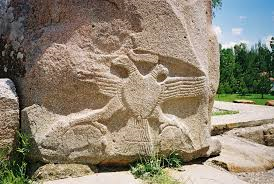
From thread by our own Madhouse, ATS member, post by Lone Wolf
Cross

On second thought, although I cant post an image, to no ones great shock I am sure it cant be found used as early as 3200 BC Mesopotamia. All roads lead to Babylon as usual. Most roads lead to Babylon.
I have a copy of the Yale collection "Early Near Eastern Seals" and it shows this symbol being used in all of its glory during the Uruk period, 3200 bc and the book suggests that this was even early "Sumerian" ie during a proto-phase marked by the very early forms of Sumerian writing.
Its probably much like this symbol oldest use found at Lagash 3000 bc+- and then on up through history even today. From what I can see its used in the Scottish Rite as a 32degree symbol, ect, ect ect.

From thread by our own Madhouse, ATS member, post by Lone Wolf
Cross

edit on 14-3-2014 by Logarock because: n
reply to post by Logarock
Thanks Logarock. All roads do lead to Babylon and Picts too:
The coat of arms for Perth and Kinross:

And quite an interesting article about the Scottish Rite, the serpent, the eagle and the mysterious Tau:
The Masonic Dictionary
And since he mentioned it above, the Templar Cross:
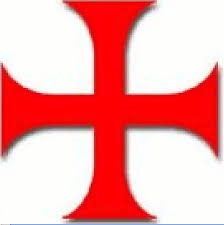
Thanks Logarock. All roads do lead to Babylon and Picts too:
The coat of arms for Perth and Kinross:

And quite an interesting article about the Scottish Rite, the serpent, the eagle and the mysterious Tau:
THERE IS SCARCELY a symbol in any of the philosophical or chivalric degrees of the Scottish Rite so striking in design and import as that of the double-headed eagle.
The tau cross and serpent of the Twenty-fifth Degree, the sun of the Twenty-eighth Degree, and the cross of St. Andrew in the Twenty-ninth Degree are indeed fraught with deep meaning, both historic and esoteric, but none can claim a more romantic or significant history than that of the Thirtieth Degree, that of the Grand Elect Knight Kadosh, or Knight of the Black and White Eagle. As an emblem this eagle is the epitome of religious and symbolic history, and to trace the winding flight of the double-headed bird is to survey the whole course of civilization, from its grey dawn north of the Persian gulf to this modern World. Its flight from the plains of Sumeria marks the rise and fall of the great mother religions of the world, and it was well on its journey, by some fifteen hundred years, when Moses found a name for the God of Israel.
When our ancient brethren, the holy Crusaders, passed through Byzantium on their way to the tomb of the Saviour, the double-headed eagle which they saw embroidered in gold on heavy banners of silk, borne aloft by the Seljuk Turks, had been four thousand years on its way. To these same Crusaders this emblem was an honoured one, and though the enemy displayed it, yet they would fight to death for its possession and in triumph bear it, dripping with blood, to their encampments on the Levantine shore. It was from this Eastern Empire that the knights took this banner to adorn the courts of Charlemagne, and as a sacred relic hung it in the great cathedrals, whose architects and masons had so often been honoured by this Emperor of the West.
From whence came this two-headed eagle, and how came it to be associated with Scottish Rite Masonry? The last part of this question is easier to answer than the first, for there is direct testimony that Frederick of Prussia supplied this crest during the formative stages of the Rite, but neither Frederick nor indeed Prussia could claim the exclusive right the use or to bestow it. It is the imperial emblem of Russia, Austria, Serbia and other portions of the disrupted Holy Roman Empire, and Prussia adopted the emblem long after it had flown over Byzantium as the royal arms of the "Emperors of the East and West."
The emblem soon spread throughout all Europe, an inheritance from the knight Crusaders.
The Masonic Dictionary
And since he mentioned it above, the Templar Cross:

reply to post by muzzleflash
Funnily enough, possibly yes. The Phoenicians etc were here for tin, bronze, silver - Britain had a wealth of metal and there are ancient mines, particularly in Wales.
Earlier on, I wondered if this symbol (bottom right):
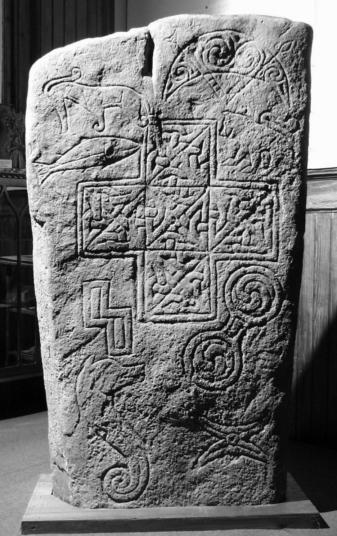
Had anything to do with the alchemical symbol (for tin, if I remember rightly):
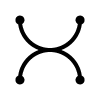
There's the word brazen again, brass.
Hmmm how compelling, the secrets of metallurgy perhaps?
Funnily enough, possibly yes. The Phoenicians etc were here for tin, bronze, silver - Britain had a wealth of metal and there are ancient mines, particularly in Wales.
Earlier on, I wondered if this symbol (bottom right):

Had anything to do with the alchemical symbol (for tin, if I remember rightly):

reply to post by beansidhe
I saw that pages back and tried to match it up with copper ingot shape. Its similar.
And there is an image of a real aquatic sea horse.....sea people, shippers.
I saw that pages back and tried to match it up with copper ingot shape. Its similar.
And there is an image of a real aquatic sea horse.....sea people, shippers.
edit on 14-3-2014 by Logarock because: n
reply to post by Logarock
I'm doing this quickly, while it's quiet at work, but at first glance yes, it's very, very possible:
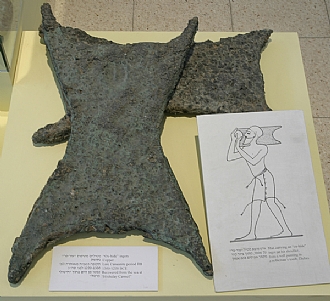
Ancient wisdom
And from that, these very, very interesting glyphs appear:

I'm doing this quickly, while it's quiet at work, but at first glance yes, it's very, very possible:

Ancient wisdom
And from that, these very, very interesting glyphs appear:

reply to post by Logarock
Oh yeah, it's got a proper tail. I wonder if that could be it - their 'logo'?
Oh yeah, it's got a proper tail. I wonder if that could be it - their 'logo'?
reply to post by muzzleflash
See what you can do when you're forced into it! Lol!
Good thinking, thanks M x
See what you can do when you're forced into it! Lol!
Good thinking, thanks M x
new topics
-
Lawmakers move to automate Selective Service registration for all men
World War Three: 1 hours ago -
War is coming in months not years Chicago
US Political Madness: 2 hours ago -
Nearly 70 Percent of Gaza Aid From US Stolen
Middle East Issues: 3 hours ago -
Biden Administration Allows State Sponsor of Terrorism Cuba to Tour Miami Airport TSA
US Political Madness: 5 hours ago -
Must Watch Interview: Illegal Alien Invasion of United States, Now Totals 52 Million
Political Issues: 7 hours ago -
Norway, Ireland and Spain say they will recognize a Palestinian state
Other Current Events: 7 hours ago -
Pyrography and Scrimshaw
Member Art: 8 hours ago -
Biden administration announces additional $7.7 billion in student debt relief
US Political Madness: 11 hours ago
top topics
-
Must Watch Interview: Illegal Alien Invasion of United States, Now Totals 52 Million
Political Issues: 7 hours ago, 23 flags -
Our recent trip to Ukraine (Kyiv)
Other Current Events: 12 hours ago, 14 flags -
Biden Administration Allows State Sponsor of Terrorism Cuba to Tour Miami Airport TSA
US Political Madness: 5 hours ago, 11 flags -
You "Inspiresing Erectionists"!
US Political Madness: 12 hours ago, 9 flags -
Biden administration announces additional $7.7 billion in student debt relief
US Political Madness: 11 hours ago, 8 flags -
War is coming in months not years Chicago
US Political Madness: 2 hours ago, 7 flags -
Rishi Sunak to announce UK General Election on July 4th?
Political Issues: 13 hours ago, 7 flags -
Nearly 70 Percent of Gaza Aid From US Stolen
Middle East Issues: 3 hours ago, 7 flags -
'Skeptics' Ridiculous Explanations Of The Rendlesham Forest Events
Aliens and UFOs: 17 hours ago, 5 flags -
Pyrography and Scrimshaw
Member Art: 8 hours ago, 5 flags
active topics
-
The Anunnaki and the Matrix of Lies. The Missing Links.
Ancient & Lost Civilizations • 766 • : Zanti Misfit -
Androgeneous, Bisexual, Homosexual, or Heterosexual?
Health & Wellness • 91 • : Annee -
'Skeptics' Ridiculous Explanations Of The Rendlesham Forest Events
Aliens and UFOs • 28 • : Arbitrageur -
BIG REVEAL | Intelligence advisor says ‘catastrophic disclosure’ about UFOs may be on horizon
Aliens and UFOs • 77 • : Ophiuchus1 -
I'm convinced...now more than ever
General Conspiracies • 115 • : NorthOS -
-@TH3WH17ERABB17- -Q- ---TIME TO SHOW THE WORLD--- -Part- --44--
Dissecting Disinformation • 1105 • : daskakik -
Lawmakers move to automate Selective Service registration for all men
World War Three • 3 • : Boomer1947 -
Ashley Biden's 'INAPPROPRIATE SHOWERS WITH DADDY' Diary is Real--DOJ
US Political Madness • 147 • : Sookiechacha -
ICC Apply for Arrest Warrants for Netanyahu and Hamas leader
Middle East Issues • 92 • : KrustyKrab -
War is coming in months not years Chicago
US Political Madness • 7 • : bally001

